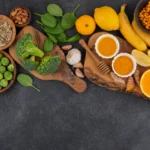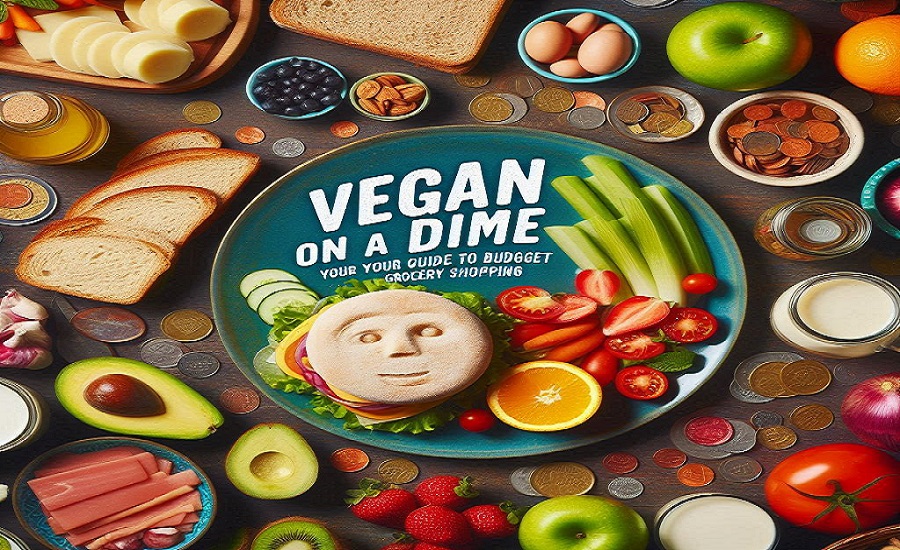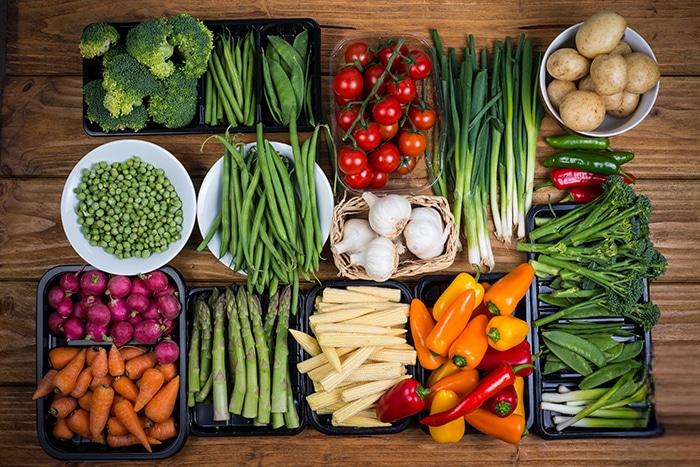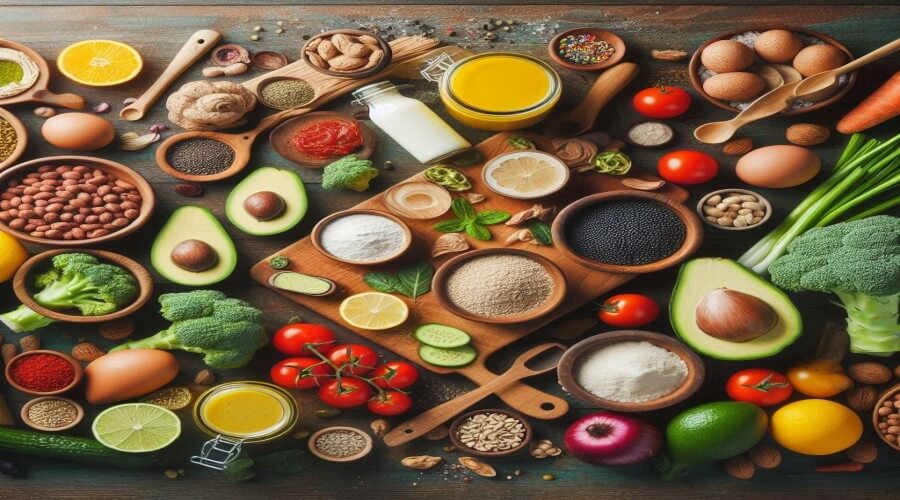The notion that veganism is inherently expensive is a pervasive myth. This analysis delves into the reality of budget-friendly vegan grocery shopping, revealing it as far more than a cost-saving exercise. We examine this practice through five critical lenses: Nutritional Science, Ethical Advocacy, Environmental Science, Everyday Practice, and Cultural Observation. Our findings indicate that shopping vegan on a budget is not only achievable but can strategically enhance nutritional intake by focusing on whole food staples. Ethically, it democratizes compassionate eating, making it accessible across socioeconomic levels. Environmentally, budget vegan staples represent some of the lowest-impact food choices available. Practically, it hinges on developing smart shopping and cooking strategies.
Culturally, it connects with long-standing traditions of frugal, plant-based eating while reflecting modern trends in food accessibility and conscious consumption. This 360° analysis demonstrates that eating plants and saving cash is a synergistic approach, beneficial for personal health, ethical alignment, planetary well-being, and financial resilience.
Guide to Smart Budget-Friendly Vegan Grocery Shopping
LENS 1: Nutritional Analysis – Maximizing Nutrients Per Dollar
- Key Findings: Budget-conscious vegan shopping often naturally steers consumers towards highly nutrient-dense, minimally processed staples like legumes, whole grains, tubers, and seasonal produce, potentially improving overall diet quality compared to diets reliant on expensive processed foods (vegan or otherwise). Careful planning ensures micronutrient needs are met without breaking the bank.
- Detailed Analysis:
- Prioritizing Staples: When cost is a primary driver, focus shifts to foundational foods. Dried beans, lentils, chickpeas, brown rice, oats, potatoes, sweet potatoes, carrots, onions, cabbage, and seasonal fruits (like bananas or apples) form the core. These foods are rich in fiber, complex carbohydrates, plant protein, vitamins, and minerals.
- Nutrient Density per Dollar: Legumes, for instance, are exceptionally cost-effective sources of protein and fiber. Whole grains offer B vitamins and minerals cheaply. Root vegetables provide energy and nutrients affordably. Compared to meat, dairy, or even many processed vegan alternatives, these staples deliver more nutritional bang for your buck.
- Potential Pitfalls: An unplanned ultra-budget approach could risk over-reliance on refined grains (white rice, pasta) or lack of variety, potentially falling short on micronutrients like iron, zinc, calcium, or healthy fats. Strategic inclusion of leafy greens, nuts/seeds (bought in bulk), and fortified foods (if affordable, like some plant milks or nutritional yeast) is important.
- Smart Supplementation: Budgeting might require savvy choices for crucial nutrients like B12 (supplements are often very cost-effective long-term) and potentially Vitamin D or Omega-3s (flax/chia seeds are cheap ALA sources; algal oil supplements require budgeting).
- Nutritional Deep Dive: The Power of Pulses
- Pulses (dried beans, lentils, chickpeas, peas) are the undisputed champions of budget vegan nutrition. They are incredibly cheap, shelf-stable, versatile, and packed with protein, fiber, iron, folate, potassium, and magnesium. A cup of cooked lentils provides around 18g of protein and 16g of fiber for mere pennies, promoting satiety, gut health, and stable blood sugar. Learning to cook them from dried (much cheaper than canned) is a key budget skill.
- Pulses (dried beans, lentils, chickpeas, peas) are the undisputed champions of budget vegan nutrition. They are incredibly cheap, shelf-stable, versatile, and packed with protein, fiber, iron, folate, potassium, and magnesium. A cup of cooked lentils provides around 18g of protein and 16g of fiber for mere pennies, promoting satiety, gut health, and stable blood sugar. Learning to cook them from dried (much cheaper than canned) is a key budget skill.
- Voice of Experience (Community Dietitian): “I often work with clients on tight budgets, and showing them how affordable and incredibly healthy a vegan diet based on staples can be is eye-opening. It’s about shifting focus from pricey mock meats to versatile beans, lentils, and seasonal veg. It’s empowering nutrition.” – Maria Garcia, RD, MPH.
- Hidden Benefit: Reduced Intake of Sodium and Additives. Cooking from scratch with basic ingredients inherently lowers intake of the high sodium, sugar, unhealthy fats, and various additives often found in pre-packaged and processed foods (both vegan and non-vegan).
- Critical Reassessment: While staples are key, variety is important for micronutrients and enjoyment. A budget needs slight flexibility to include some higher-nutrient items like nuts, seeds, or diverse produce when possible/on sale, preventing nutritional monotony.
LENS 2: Ethical Framework – Compassion Without Class Barriers
- Key Findings: Budget veganism dismantles the critique that ethical eating is a privilege reserved for the wealthy. It demonstrates that aligning food choices with values of non-violence and anti-exploitation is accessible, promoting inclusivity within the vegan movement and broader food justice conversations.
- Detailed Analysis:
- Democratizing Ethics: Demonstrating that veganism can be done affordably challenges elitist perceptions and makes the ethical arguments against animal exploitation accessible to people from all income levels. It shifts the focus from consumer products to fundamental food choices.
- Food Justice Lens: Budget strategies often intersect with navigating food deserts or limited access areas. Utilizing affordable staples, community gardens, or food assistance programs can be essential tools for maintaining a vegan diet under such constraints, highlighting systemic issues of food access.
- Countering Luxury Arguments: When veganism is framed solely around expensive substitutes or wellness trends, it alienates many. Budget veganism grounds the movement in principles applicable universally, focusing on the inherent ethical choice rather than consumer status symbols.
- Empowerment: Successfully eating ethically within a tight budget provides a powerful sense of agency and resourcefulness, proving that personal values don’t need to be compromised due to financial limitations.
- Voice of Experience (Food Justice Advocate): “Veganism must be accessible to be truly liberatory. Focusing on budget strategies, community support, and celebrating the affordable, traditional plant-based meals of diverse cultures breaks down barriers. Ethical eating shouldn’t have a price tag.” – Kwame Johnson, Community Organizer.
- Daily Impact: Each inexpensive, plant-based meal reinforces the possibility of living ethically without financial strain, potentially inspiring others and fostering a more inclusive community.
- Alternative Approaches: Beyond individual shopping: Utilizing community fridges, participating in CSAs (sometimes with sliding scales), food co-ops, gleaning initiatives (gathering leftover crops), or advocating for more plant-based options in food banks contribute to affordable ethical eating.
LENS 3: Environmental Scientist’s Analysis – Low Cost, Low Impact
- Key Findings: The foundational foods of budget vegan grocery shopping—legumes, grains, tubers, seasonal/local produce—coincide with the lowest environmental impact food choices available, significantly reducing greenhouse gas emissions, land use, and water consumption compared to both animal products and often, resource-intensive processed vegan alternatives.
- Detailed Analysis:
- Intrinsic Efficiency: Foods like lentils, beans, potatoes, and rice require vastly fewer resources (land, water, energy) to produce per calorie or gram of protein than meat or dairy. Their carbon footprints are minimal.
- Avoiding Processing & Transport: Budget shopping often prioritizes whole, unprocessed ingredients and potentially local/seasonal items (if cheaper), reducing energy use associated with manufacturing, packaging, and long-distance transportation common with specialty vegan products.
- Nitrogen Fixation: Legumes, a budget staple, are nitrogen-fixing plants, meaning they enrich the soil naturally, reducing the need for synthetic nitrogen fertilizers, which are energy-intensive to produce and contribute to nitrous oxide emissions 1 and water pollution.
- Reduced Food Waste: Buying whole ingredients and cooking from scratch, common in budget strategies, can lead to better utilization and less waste compared to buying pre-packaged meals or letting specialty items expire. Using vegetable scraps for broth is a classic frugal and eco-friendly technique.
- Market Transformation Map:
- While the market for processed vegan alternatives grows, the bedrock market for affordable staples remains crucial for both budget adherence and maximal environmental benefit.
- Voice of Experience (Sustainable Food Systems Analyst): “From an environmental perspective, the cheapest vegan foods are often the best. Lentils, beans, potatoes – these are ecological superstars. A diet centred on these has a dramatically lower footprint than almost any other eating pattern, including vegan diets relying heavily on imported or highly processed items.” – Dr. Emily Vance, Environmental Researcher.
- Hidden Benefit: Supporting Resilient Agriculture. Many staple crops central to budget vegan eating (diverse beans, grains, tubers) are crucial for agricultural biodiversity and have varieties adapted to low-input farming systems, contributing to food system resilience.
LENS 4: Everyday Practitioner’s Experience – The Art of Frugal Feasting
- Key Findings: Successfully eating vegan on a budget relies heavily on practical skills: strategic planning, smart shopping techniques, efficient cooking methods, and minimizing food waste. It’s an active, engaged approach to grocery shopping and food preparation.
- Detailed Analysis:
- Prioritize Staples: Base lists around beans, lentils, rice, oats, potatoes, pasta, onions, carrots, etc.
- Buy Dried & Bulk: Dried beans/grains are significantly cheaper than canned. Bulk bins (if available and hygienic) offer savings on grains, nuts, seeds, spices.
- Compare Unit Prices: Look at price per ounce/kg, not just the sticker price. Larger packages are often cheaper per unit.
- Shop Seasonally & Locally: Produce in season is usually cheaper and fresher. Farmers’ markets (especially near closing) or local ethnic markets can offer deals.
- Frozen & Canned: Frozen fruits/vegetables are just as nutritious as fresh (sometimes more) and often cheaper, especially out of season. Canned tomatoes, beans (if not buying dried) are pantry workhorses.
- Discount Stores: Explore stores like Aldi, Lidl, or local equivalents which often have lower prices on staples.
- Meal Planning: The cornerstone. Planning meals around existing pantry staples, seasonal sales, and bulk items prevents impulse buys and ensures ingredients are used efficiently.
- Shopping Strategies:
- Cooking from Scratch: Making your own sauces, dressings, breads, plant milks (like oat milk), or veggie broth is much cheaper than buying pre-made versions.
- Batch Cooking & Freezing: Cooking large portions of staples (beans, grains, soups, stews) saves time and utilizes ingredients bought in bulk. Freezing portions ensures quick future meals.
- Minimizing Waste: Use vegetable scraps for broth, revive wilted greens, use stale bread for croutons/breadcrumbs, plan meals to use up perishable items first.
- Voice of Experience (Budget Vegan Blogger): “It’s all about the strategy! Plan your meals, hit the discount grocery store, buy dried beans, cook a big pot of something delicious on Sunday, and you’re set. People think it’s hard, but once you get the hang of it, saving money while eating amazing vegan food feels like a superpower!” – Alex ‘The Frugal Vegan’ Green.
- Daily Impact: Develops valuable life skills in budgeting, planning, cooking, and resourcefulness. Reduces financial stress related to food costs.
LENS 5: Cultural Observer’s Perspective – Frugality, Tradition, and Modern Trends
- Key Findings: Budget vegan eating connects with deep cultural roots of frugal, plant-centric diets found globally, while also reflecting modern economic pressures and the evolving perception of veganism within contemporary consumer culture.
- Detailed Analysis:
- Historical & Global Context: For much of human history and in many cultures today, meat was a luxury. Staple diets revolved around affordable plants: rice and beans in Latin America, dal and rice/roti in India, pasta e fagioli in Italy, potato-based dishes in Eastern Europe, tofu and rice in East Asia. Budget veganism often rediscovers these traditional, time-tested ways of eating.
- Challenging the “Elite” Narrative: The rise of budget vegan resources actively combats the media portrayal of veganism as solely a high-cost, wellness-focused trend for affluent Westerners. It highlights its working-class roots and global accessibility.
- Role of Retail Landscape: The growth of discount supermarkets (Aldi, Lidl) and the prevalence of ethnic markets offering cheap bulk staples have been crucial infrastructure supporting affordable vegan eating in many Western countries.
- Influence of Digital Culture: Online blogs, YouTube channels (like “Cheap Lazy Vegan,” “Plant Based on a Budget”), and social media communities dedicated to budget veganism provide practical tips, recipes, and community support, normalizing frugal plant-based eating.
- Economic Drivers: Economic downturns (like the 2008 recession and recent inflationary periods) often boost interest in frugal living, including budget cooking, making affordable vegan strategies more relevant and appealing.
- Voice of Experience (Food Historian): “Looking back, most everyday diets were heavily plant-based out of necessity. The modern ‘budget vegan’ isn’t inventing something new; they’re often reconnecting with the resourceful, delicious, plant-centric foodways of their own or other cultures’ ancestors. The current trend simply makes this wisdom more visible again.” – Dr. Fatima Khan, Food Historian.
- Turning Point Analysis:
- Post-WWII Industrial Agriculture: Made meat cheaper and more central in Western diets, overshadowing traditional frugal plant-based meals.
- Rise of Discount Grocers (e.g., Aldi entering UK/US): Provided widespread access to low-cost staples.
- 2008 Global Financial Crisis: Increased public interest in frugality and budget cooking across the board.
- Proliferation of Budget Vegan Online Content (2010s): Created accessible resources and communities specifically for affordable plant-based eating.
- Recent Inflationary Pressures (2020s): Renewed focus on grocery savings, making budget veganism highly relevant.
PERSPECTIVE INTERSECTION MATRIX
- Practice <> Nutrition: Budget shopping strategies (Lens 4) naturally lead to consuming nutrient-dense staples (Lens 1), though conscious effort ensures variety.
- Environment <> Practice: The most environmentally friendly foods (Lens 3) are often the cheapest staples prioritized in budget shopping (Lens 4). Reducing waste (Lens 4) also has environmental benefits (Lens 3).
- Ethics <> Practice: Practical budget strategies (Lens 4) make ethical vegan choices (Lens 2) accessible to a wider population, removing cost as a barrier.
- Culture <> Practice: Traditional frugal foodways (Lens 5) provide a blueprint for modern budget vegan cooking techniques and recipes (Lens 4). Access via ethnic/discount markets (Lens 5) enables budget shopping (Lens 4).
- Nutrition <> Ethics: Demonstrating nutritional adequacy on a budget (Lens 1) strengthens the case that ethical choices (Lens 2) don’t require sacrificing health or wealth.
MISCONCEPTION ANALYSIS
| Misconception | Reality (Drawing from Lenses) |
| Veganism is inherently expensive. | A vegan diet based on staples (beans, lentils, grains, seasonal produce) is often significantly cheaper than meat-heavy diets or those reliant on processed foods. (Lens 4, Lens 1) |
| You need fancy, specialty vegan ingredients. | Effective, nutritious, and delicious vegan meals can be made entirely from common, affordable staples found in most supermarkets. (Lens 4, Lens 1, Lens 5) |
| Budget vegan food is boring and unhealthy. | Staples form the base for diverse, flavorful global cuisines. A well-planned budget vegan diet is rich in nutrients and fiber, promoting health. (Lens 1, Lens 4, Lens 5) |
| Saving money means sacrificing nutrition. | Prioritizing nutrient-dense staples often improves nutritional intake per dollar spent compared to expensive, less nutritious convenience foods. (Lens 1) |
| Ethical / Environmentally Conscious eating is a luxury. | Budget veganism demonstrates that compassionate and sustainable food choices are accessible and affordable, grounded in universally available staples. (Lens 2, Lens 3, Lens 4) |
KEY TURNING POINTS (Revisited)
- Codification of Traditional Frugal Cuisines: Cookbooks and cultural transmission preserving plant-based staple recipes worldwide.
- Expansion of Global Trade & Discount Retail: Making diverse, cheap staples (rice, beans, spices, etc.) widely available globally through supermarkets, discount chains, and ethnic markets.
- The Digital Age: Explosion of online recipe sharing, budget blogs/vlogs, and community forums specifically for affordable vegan eating, democratizing information.
- Economic Recessions/Inflation: Driving increased consumer interest in frugal living and budget-friendly food strategies, boosting the visibility of affordable veganism.
- Growing Mainstream Awareness: Increased general knowledge about plant-based eating (even if initially focused on expensive trends) creates a larger audience potentially receptive to budget approaches.
SYNTHESIS & RECOMMENDATIONS
Budget vegan grocery shopping is far more than a niche skill; it is a practical, powerful intersection of personal finance, nutrition, ethics, environmental stewardship, and cultural wisdom. It proves that eating in alignment with health goals, ethical values, and planetary well-being does not require significant financial resources. The strategies involved planning, prioritizing staples, cooking from scratch, minimizing waste—build food literacy and resilience.
- Recommendations:
- Embrace Staples: Make beans, lentils, rice, oats, potatoes, and seasonal vegetables the foundation of your grocery list.
- Plan Ahead: Dedicate time weekly to plan meals based on sales and what you already have.
- Cook from Scratch: Learn basic techniques for cooking dried beans, making simple sauces, and preparing versatile base ingredients.
- Shop Smart: Compare unit prices, explore discount stores and bulk options, buy produce in season.
- Connect & Learn: Utilize online budget vegan communities and resources for recipes, tips, and motivation.
By adopting a budget-conscious approach, veganism becomes more inclusive, sustainable, and grounded, demonstrating its potential as a viable and beneficial way of eating for everyone.












